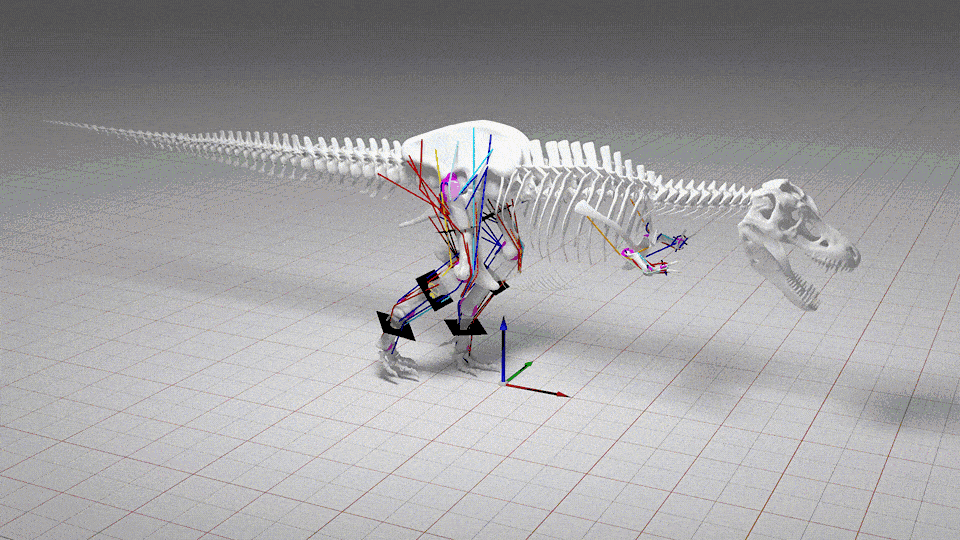When you buy through tie-in on our site , we may gain an affiliate commission . Here ’s how it works .
During the dinosaur old age , azhdarchid pterosaurs — soaring reptiles that could grow as big as airplanes — supported their absurdly long neck and large heads during flight thanks to a never - before - seen internal bone structure in their neck vertebra , a Modern study get .
This unique structure , which look like the spokes on a cycle wheel , allowed the largestpterosaurssuch asQuetzalcoatlus northropi , which had a wingspan of more than 30 human foot ( 10 meters ) , to fly with necks that were longer than agiraffe’sneck , the researchers find .

An illustration of the giant pterosaur, Alanqa saharica, whose remains were found in Morocco.
" One of our most important finding is the arrangement of hybridizing - strut within the vertebral centrum [ the inner wall of the vertebrae ] , " sketch co - research worker Dave Martill , a professor of paleobiology of the University of Portsmouth in the United Kingdom , state in a statement . " It is unlike anything seen previously in a vertebra of any animal . "
Related : In range of a function : A butterfly - channelise fly reptile
The team found that in flying reptile in the family Azhdarchidae , these gat - like structures connected the home walls of the for the most part hollow neck vertebra . These slender rod had an average diameter of 0.04 inches ( 1.16 mm ) , and they were " helically arranged along the duration of the vertebra , " Martill say . " Evolution shape these animate being into awesome , breathtakingly effective flyers . "

This cross-section of the pterosaur vertebra shows the spoke-like arrangement within it.
phylogeny shape these creatures into awing , breathtakingly efficient flyers .
flying reptile are n’t dinosaur , but lived alongside them after emerge during the lateTriassic period , about 225 million years ago , until they vanish from the fossil record book at the close of theCretaceous period , about 65.5 million years ago .
Until now , researchers suspected that a pterosaur ’s neck bones had only a simple tube - within - a - tube social structure , Martill said . But this nominate structure belike would n’t have cater the long neck enough support for the flying reptile ’s head — which could be long than 5 groundwork ( 1.5 m ) — specially when it grabbed and carried cloggy fair game through the air while hunting .

This pterosaur neck vertebra has a bicycle wheel-like spoke construction.
" These animals have ludicrously long necks , " study first author Cariad Williams , who major in palaeontology at the University of Portsmouth and is now a doctorial student at the University of Illinois at Urbana - Champaign , enunciate in the financial statement . In some pterosaur specie , the fifth neck vertebra from the head is as long as the residuum of the animal ’s body .
" We wanted to know a flake about how this fabulously long neck functioned , as it seems to have very little mobility between each vertebra , " Williams said .
To inquire , they did X - ray cypher tomography ( CT ) scan of a well - preserved Cretaceous - age pterosaur specimen ( Alanqa saharica ) get wind in Morocco . The results exhibit the helically arranged supportive spider web - like lines crisscross the insides of the neck opening vertebrae .

— photograph : Ancient pterosaur eggs & fossils uncover in China
— Photos : Baby pterosaurs could n’t wing as hatchling
— Photos of flying reptile : Flight in the age of dinosaurs

Load - bearing calculation of the cervix vertebra present that as few as 50 of these speak - like supports increased the amount of weighting the neck could carry , without buckling , by up to 90 % , the research worker say . These rundle , together with the tube - within - a - tube-shaped structure anatomical structure , show how pterosaurs could have captured and carried heavy fair game without injuring their own farsighted necks .
The finding , which shows how " fantastically complex and advanced " pterosaur neck were , Martill say , was published online Wednesday ( April 14 ) in the journaliScience .
Originally published on Live Science .















